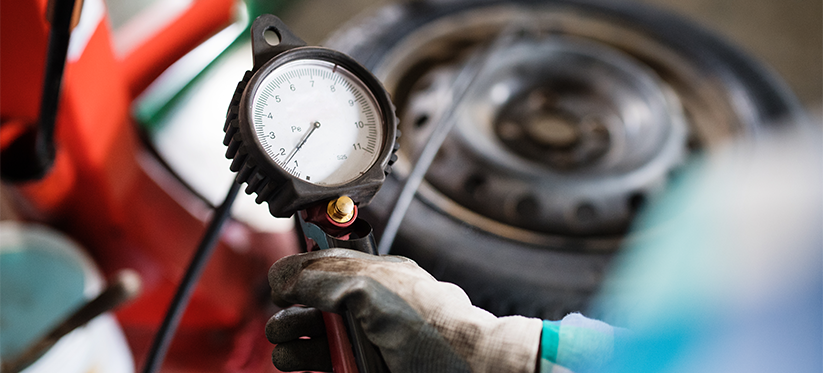
Most owners only notice something is wrong with their car tyres when one or more of them deflates completely or is critically low on air. That’s why, at Apollo Tyres, we always advise our customers to form a habit of checking tyres before driving. But there is an opposing problem that we come across now and then - over-inflation. We understand that it can be tempting to inflate your tyres a little bit more than the recommended levels of air pressure in the hopes of retaining the tyre pressure longer than usual. However, there are several downsides to over-inflating car tyres, which we are discussing in today’s blog.
Why is Over-Inflation a Problem?
Here’s a breakdown of the dangers of over-inflating car tyres:
Reduced Traction: Over-inflation reduces a tyre’s contact patch, that is the area which connects with the road, thus reducing traction and grip. It becomes more noticeable on wet and slippery surfaces where hydroplaning can exacerbate the situation further.
Longer Braking Distances: Over-inflated tyres also increase the braking distance of the car as it now lacks the necessary grip and friction to stop effectively.
Reduced Cornering Performance: Over-inflation makes taking turns more precarious as the reduced contact patch may lead to skidding on uneven and grainy surfaces.
Hydroplaning: Car tyres depend on their specially designed tread patterns to expel water, but with a reduced contact patch due to over-inflation, the tyre effectively loses this feature and becomes susceptible to hydroplaning.
Uneven Tread Wear: Over-inflation causes the tyre to balloon, making it rounder. This leads to greater pressure on the central area of the tread, which wears down much faster than the shoulders. In some cases, where the suspension is misaligned, the tread wear can also occur unevenly across the tyre surface, depending on the wheel’s alignment.
Impact Damage: Over-inflated tyres are more rigid and less able to absorb impacts from potholes, bumps, and other road hazards. Such impact damage can lead to bulges in the sidewall or blowouts when driving at speed.
Harsher Rides: As the tyres become more rigid due to over-inflation, they start transmitting more of the road’s imperfections to the vehicle’s suspension, which then channels it into the cabin. This can be fatiguing on long drives and can also contribute to premature wear and tear on your vehicle's suspension components.
Oversteering: Over-inflated rear tyres tend to lose grip more easily, causing the rear of the car to swing outwards when cornering, which can lead to oversteer and a mishap.
Finding the Right Pressure: Where to Look?
So, now that you understand the risks of over-inflating car tyres, it’s time we find the right pressure that will keep you and your car safe. Instead of relying on the maximum pressure that’s printed on the sidewalls of some tyres, you must find out the recommended tyre pressure by your car maker. Because the pressure printed on the tyre sidewall is the maximum pressure the tyre can handle, not the recommended pressure for optimal performance.
Check Your Vehicle's Door Jamb: Most vehicles have a sticker located on the driver's side door jamb that specifies the recommended tyre pressure for both front and rear tyres.
Consult Your Owner's Manual: Your owner's manual will also provide the recommended tyre pressure.
Adjust for Load (If Necessary): If you frequently carry heavy loads or passengers, you may need to slightly increase the tyre pressure. Consult your owner's manual for guidance.
Simple Safety Measures for Maintaining Proper Inflation
Checking your tyre pressure regularly is a quick and easy way to ensure your safety and the longevity of your tyres. Aim to check your tyre pressure at least once a month and before any long road trips. Invest in a reliable tyre pressure gauge and follow these simple steps:
Check when the tyres are cold: After the vehicle has been sitting for at least three hours or driven less than a mile.
Remove the valve cap.
Press the pressure gauge firmly onto the valve stem.
Read the pressure.
Add or release air as needed to reach the recommended pressure.
Replace the valve cap.
In conclusion, while the temptation to over-inflate your tyres might be there, understanding the dangers and prioritizing proper inflation is very important. Always follow the recommended tyre pressure guidelines and make it a habit to check your tyres regularly. These simple steps can ensure optimal handling, improved safety, extended tyre life, and a more comfortable ride for you and your loved ones.

